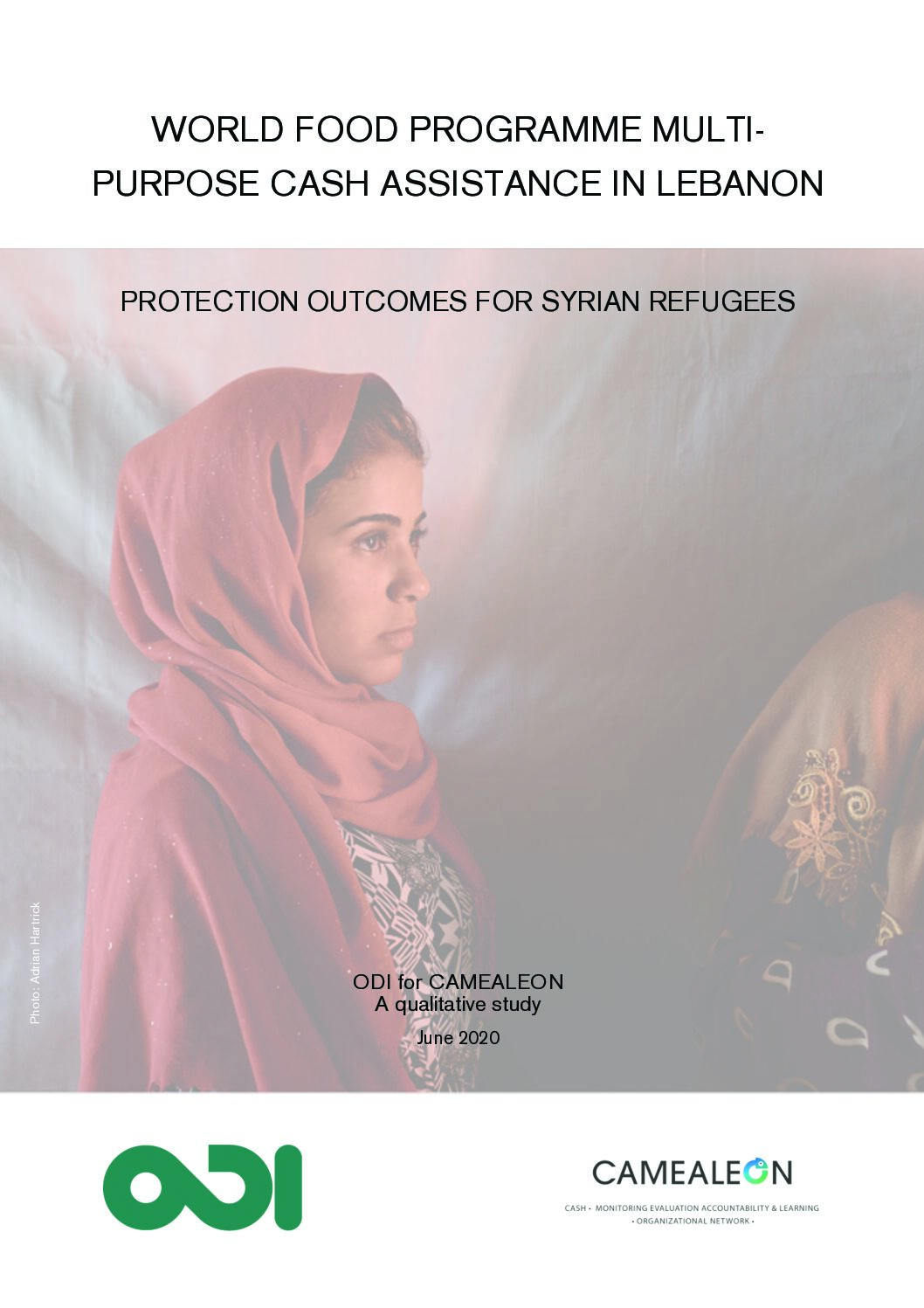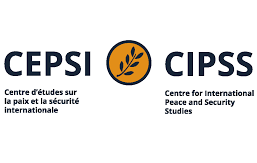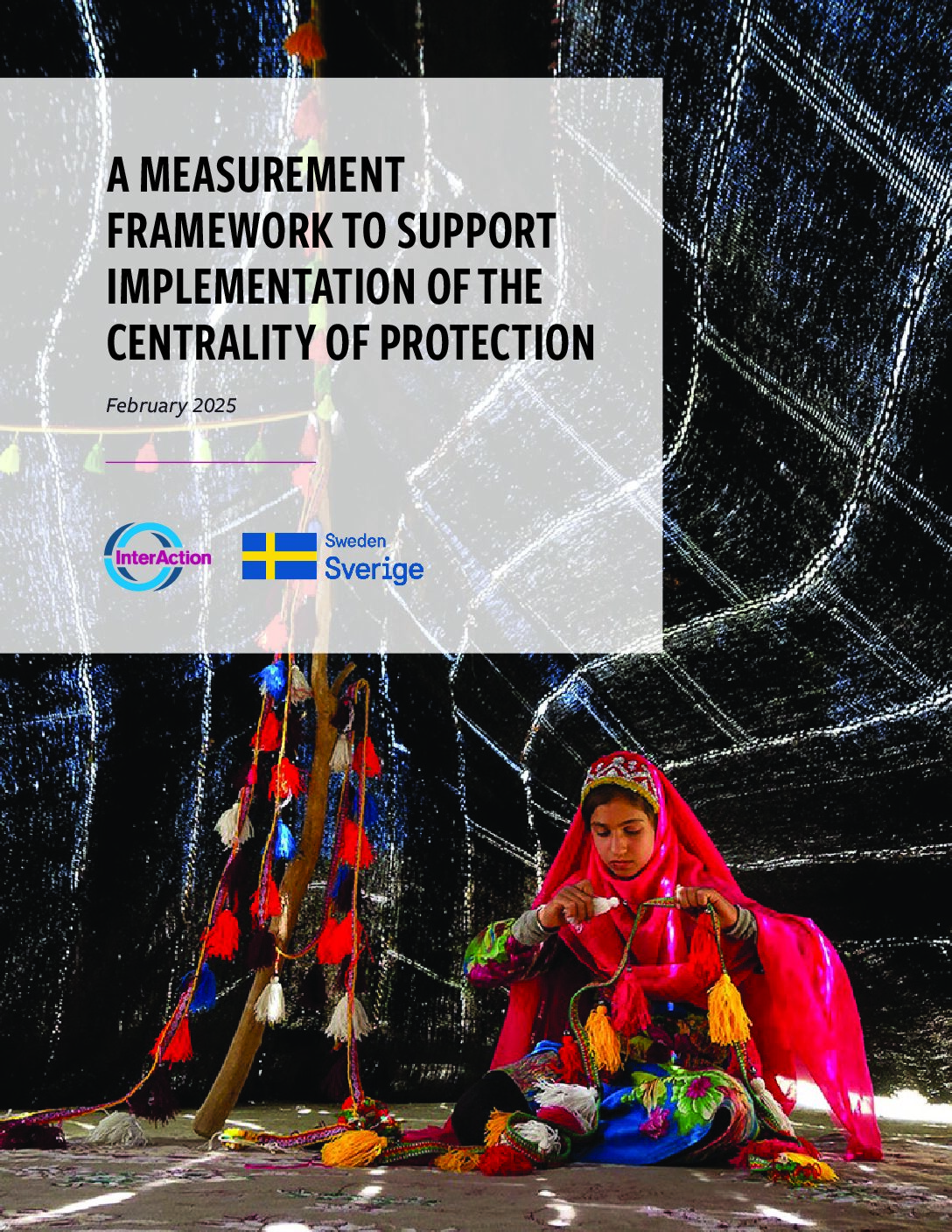I reached a stage where I had a big, accumulated debt at the supermarket. The owner told me that I couldn’t borrow anymore before paying off part of the debt. Thank God, I started to receive the 260,000 [Multi-Purpose Cash] and I was able to pay part of the debt every month.
Syrian Participant in the World Foof Programme (WFP) Multi-Purpose Cash (MPC) Assistance program in Lebanon
This was the testimony of a Syrian participant in the World Food Programme (WFP) Multi-Purpose Cash (MPC) Assistance program in Lebanon. Millions of Syrians have fled their country to escape the civil war; 1.5 million of these fled to neighboring Lebanon—making Lebanon the country with the highest population of refugees per capita. Syrian refugees in Lebanon are vulnerable to a number of protection risks, from early marriage to physical insecurity to exploitation in the workplace. The MPC program aims to help Syrian refugee households provide for their basic needs. The program identifies the most economically vulnerable households and transfers an amount of cash per person each month.
The Cash Monitoring, Evaluation, Accountability and Learning Organizational Network (CAMEALEON) carried out an analysis of the MPC program to assess how it impacted protection outcomes. To do so, it conducted interviews and focus group discussions with 270 respondents, 254 of which were Syrian refugees. The dimensions of protection it focused on were coping strategies (early marriage, and child labor), physical security and safety, and work-related protection risks.
The MPC has made inroads in protecting Syrian refugee households from some types of risk. For example, borrowing money is a widespread coping strategy, and the MPC has allowed refugee households to borrow less as well as begin to repay their existing debts. Moreover, the MPC has a clear impact on child labor and school attendance. MPC recipients with school-aged children used the MPC to pay the costs associated with school attendance, and their children worked fewer hours—or not at all. The MPC has also supported adults in working in less risky environments. It has enabled some recipients to turn down exploitative work, and women were able to work fewer hours outside the home, which they—especially those in female-headed households—saw as valuable. Women and families also reported that intra-household violence declined as a result of MPC, since financial concerns were alleviated.
However, the MPC is insufficient in addressing all household needs. Though the MPC helps cover basic needs, it does not eliminate the need to borrow money, nor does it eliminate the practice of child labor. Its impact on early marriage is also contested. Households that were discontinued in the program reported a return to risky behavior, such as having less choice in the type of work they can choose or increased intra-household violence. The MPC has also raised some protection concerns related to the challenges in accessing and operating banks and ATMs.
Thus, the MPC has played an important role in protection outcomes for Syrian refugee households. The report raises some opportunities for the WFP to further amplify protection outcomes, by complementing the MPC with specific services, such as free school transportation and meal programs. It also urges the WFP to better communicate what the MPC can achieve, given the scale of people’s needs, and to better support discontinued households. Nonetheless, the WFP MPC program is an example of emerging good practice as it aims to strengthen how a multi-sector response, like cash, can contribute to protection concerns for the most vulnerable.



